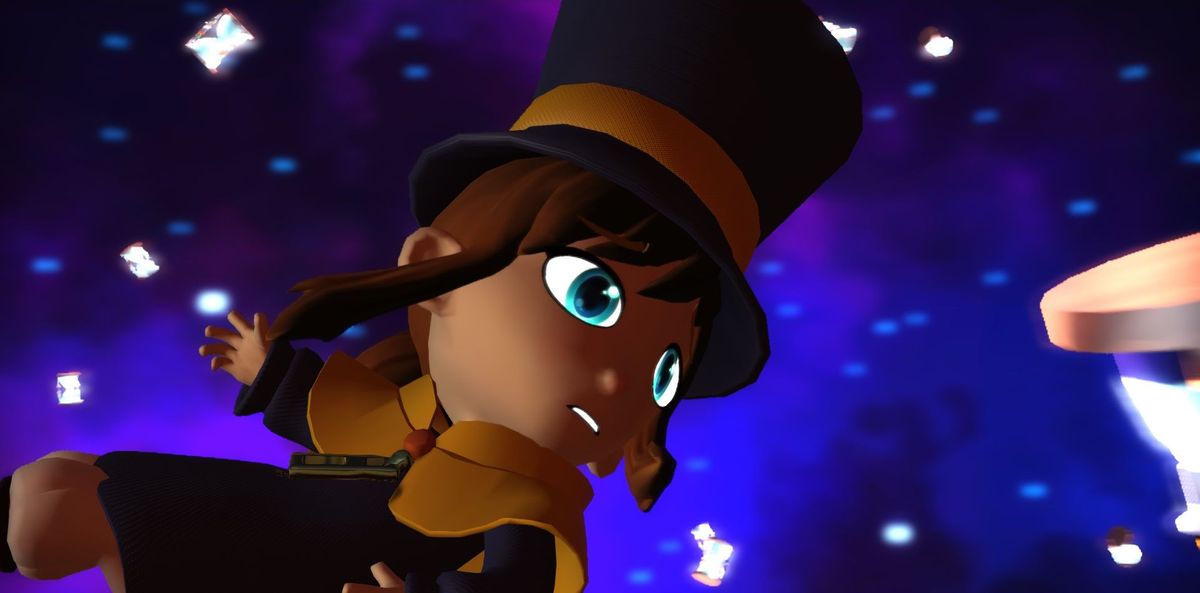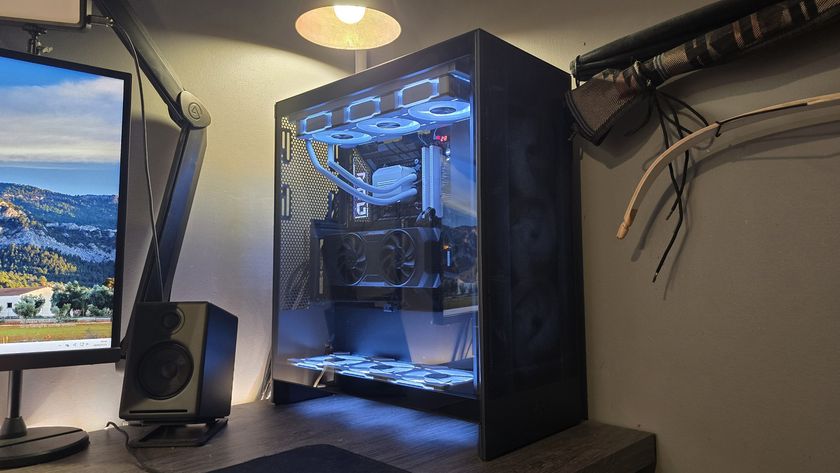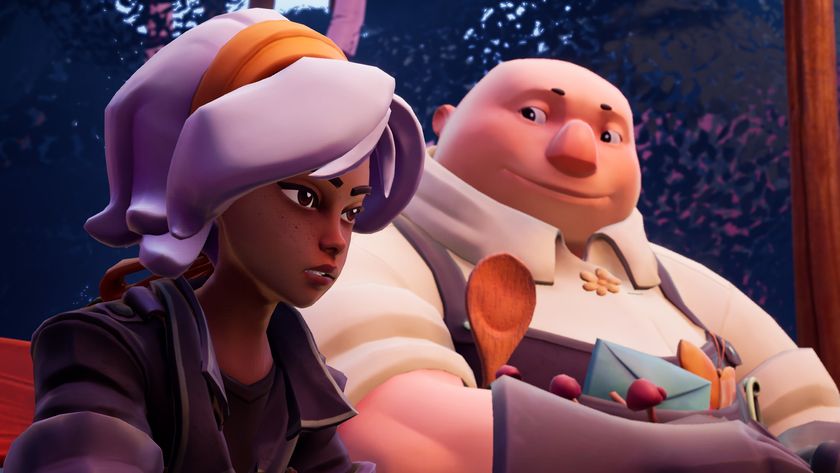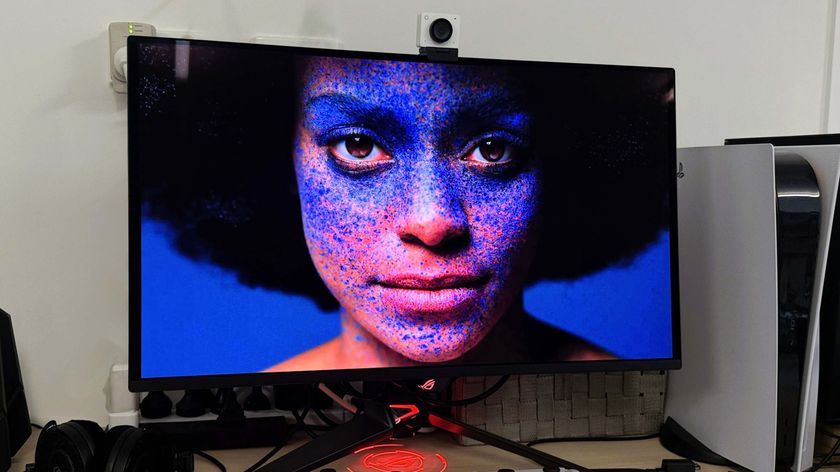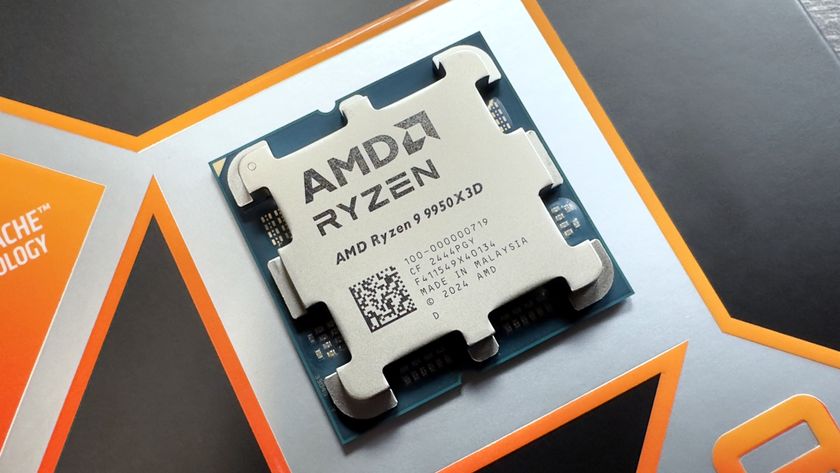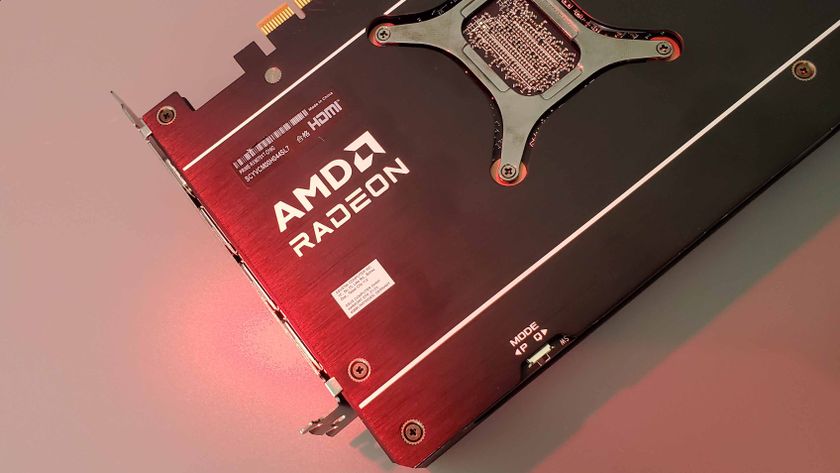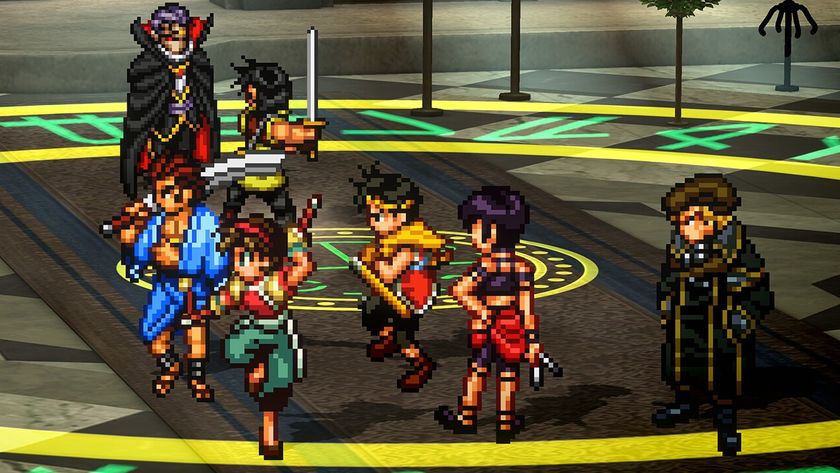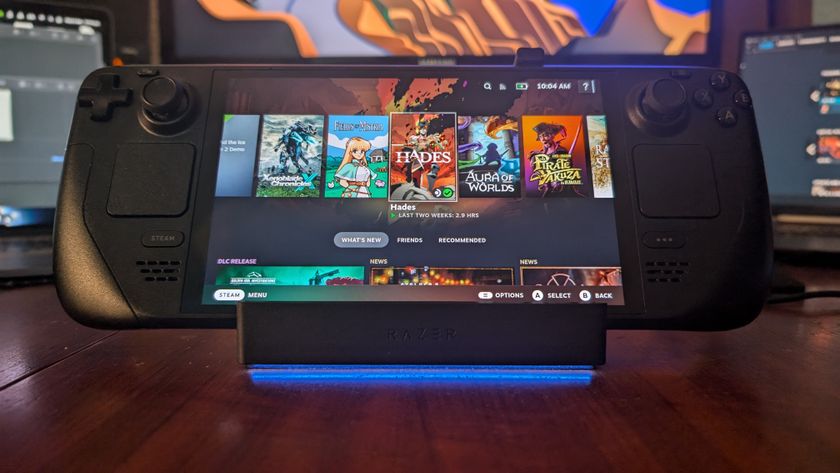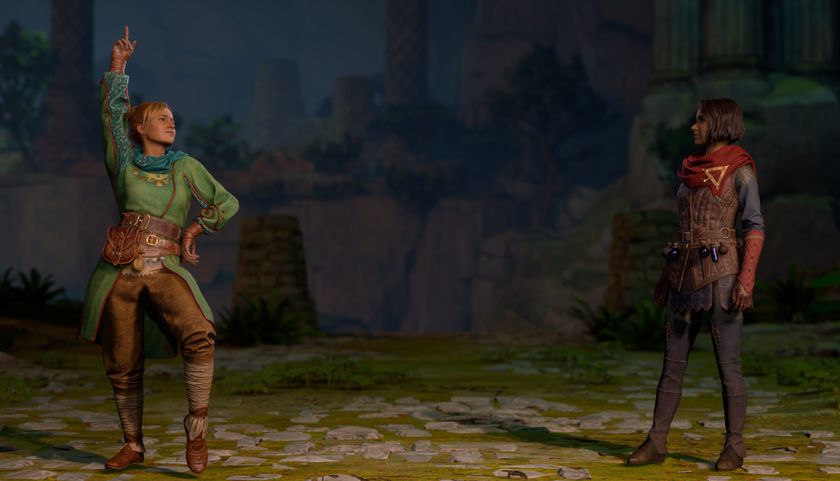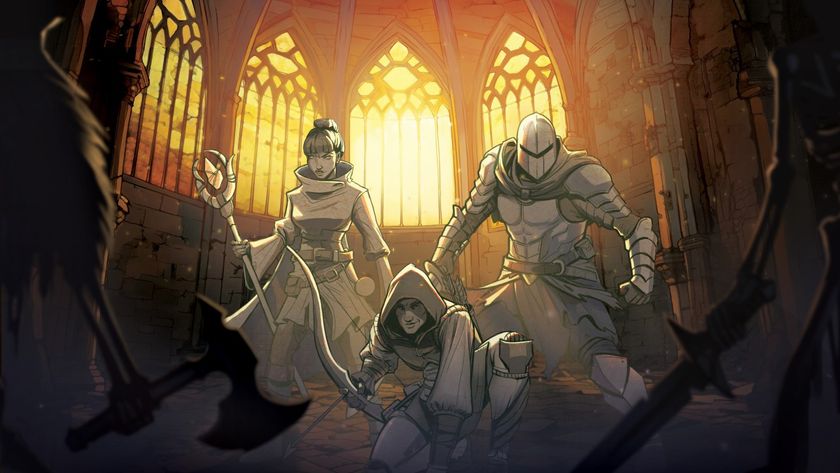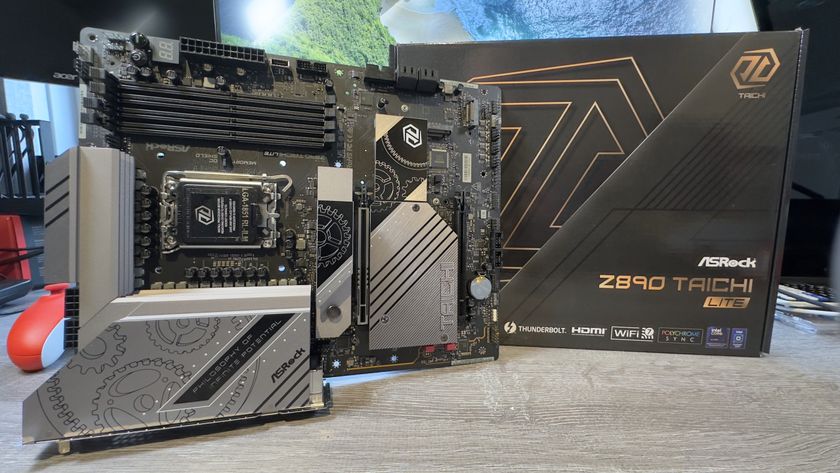Our Verdict
Some scuff-marks aside, A Hat in Time is a creative, playful, and polished tribute to a genre that doesn’t get nearly enough love on PC.
PC Gamer's got your back
What is it?: A 3D ‘collectathon’ in the vein of Mario Sunshine and Psychonauts.
Developer: Gears For Breakfast
Publisher: Gears For Breakfast
Expect to pay: $30/£23
Multiplayer: Split-screen and online co-op
Reviewed on: i5-3570k @ 3.4ghz, Geforce 1060 GTX, 16GB RAM
Link: Official site
Some days, it just doesn’t pay to get out of bed. Diminutive spacefarer Hat Kid was on her way home, her cushy wood-paneled and pillow-filled spacecraft stocked with fuel. It was all going so well—until a burly Mafioso came floating through the void, tapping on the window to demand local taxes. One heated altercation later and all the fuel fell to the strange world below, along with Hat Kid herself, and only a lot of running, jumping and collecting of random shiny objects can save the day.
Fortunately Hat Kid is more than capable of rising to the situation, and her game offers the smooth, responsive platforming controls to enable it. While A Hat in Time’s inspirations include just about every platformer that grasped for Super Mario 64’s crown, the two it cribs from most are GameCube classic Super Mario Sunshine and Psychonauts—the former for its structure and movement, the latter for its offbeat humor and playfully variable tone.
Hat Kid’s ultimate goal is to recover the 40 Time Pieces that power her ship, scattered across the surface of a strange, cartoony Earth. A Hat in Time kicks off on Mafia Island, the first of four environments and a tightly wound playground that serves as tutorial. It’s easy to navigate but complex and multilayered, boasting strange geometry to practice wall-jumping and belly-sliding on, but little in the way of threats thanks to relatively passive enemies and a lack of deadly pits.
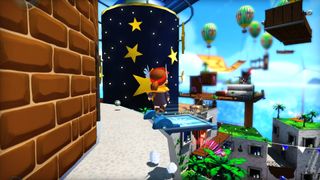
It’s a playful and creative place, indicative of the game as a whole. The ‘Mafia’ are burly goons in blue suits drawn from a child’s understanding of what a Mafia Guy is like. They’re dumb, strong, speak with a vague accent, menace little old ladies, do Professional Crimes, and really like to cook.
The town itself is littered with offbeat additions, from Mafia propaganda posters to graffiti and more. The humor in A Hat In Time doesn’t always make sense, but it’s consistently weird and charming. There are some flashes of Psychonauts’ tightly scripted wit here, and more than a little of Axe Cop’s pointed absurdity on show.
You go on ahead
After completing certain chapters or collecting enough yarn you’ll unlock new hats, each bestowing a power such as a ground-pound attack that lets you travel via marked springboards, or the ability to turn hazy green outlines into briefly tangible footholds. There’s a lot of abilities and platforming skills to learn, from a flexible wall-climbing scramble that can be chained into a wall jump, to a traditional double-jump that can be extended in mid-air with a horizontal dive.
Apline Skyline is a massive non-linear web of interconnected platforming challenges demanding mastery of every ability.
While the first Time Pieces are doled out quickly as you complete tutorial objectives, it opens up dramatically after you’ve collected a few. Each world has a different aesthetic, characters, and scale. Mafia Island may be a safe playground with tightly directed progression, but the fourth world, Apline Skyline, is a massive non-linear web of interconnected platforming challenges demanding mastery of every ability—all without a safety net and no easy goal in sight.
Though they’re not the mechanical peak of the game, the middle two worlds are the most colorful and memorable parts. Battle of the Birds recalls the best moments of Psychonauts, with character-driven humor interspersed with varied platforming challenges spread across three wildly different (if thematically linked) environments, a world apart from Mafia Island’s singular island environment. Levels here tend to be more linear than anywhere else, but it’s all in service of telling a story, or just a good joke.
The Tim Burton-esque Subcon Forest shifts gears to something more akin to Banjo-Kazooie, offering you scattered objectives around a large, multi-biome haunted forest. Hand-holding is reduced, trusting you to explore and puzzle your way to a solution, clambering up trees and towers for a better view, or just to find another minor NPC to get a hint from. It feels like the game itself is gaining confidence in you, and while it’s less character driven than Battle of the Birds, the central antagonist of the chapter—The Snatcher, ghostly ruler of the woods—is so enthusiastically voiced that it’s hard not to like him.
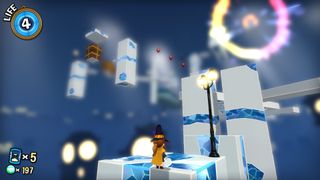
A Hat in Time never loses focus on what it is.
A fair number of Time Pieces also reside in hidden levels, the majority abstract platforming spaces, while a subset are Psychonauts-esque dreamscapes that offer a little more insight into the strange characters. These hidden levels are not only beautiful to look at, but some of the purest platforming challenges in the game.
A Hat in Time never loses focus on what it is. Even the level framed as a murder mystery plays out as evasion-focused stealth platforming bookended by weird comedy skits, a few of which made me laugh out loud. Where other platformers give in to temptation and use minigames or expendable single-use mechanics, A Hat in Time remains true to itself and draws strength from that conviction.
It does lack consistency in other ways, though. The first world establishes a conflict and a primary antagonist which is almost entirely forgotten right up until the grand finale, for instance. And while as much a strength as a weakness, the worlds are disconnected, with each feeling almost like a different game built around the same mechanical hooks.
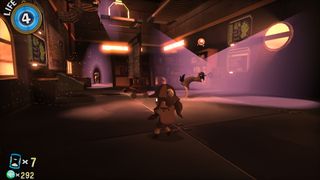
And despite offering equally good gamepad and mouse and keyboard controls, the camera—eternal bugbear of 3D platformers, undefeated even by Nintendo—is not entirely tamed here. While usually well-behaved, it can get squirrelly in tight corners, especially in the narrow alleyways of Mafia Town. It’s never a major issue, but later chapters do feel better designed with regards to the camera’s limits.
These are only minor gripes. At its worst A Hat in Time is merely good—a fun, workmanlike 3D platformer with a few technical wrinkles—and it’s only seldom at its worst. When it’s firing on all cylinders, a feat it pulls off with increasing regularity as you progress through the worlds, it’s a rival to some of Nintendo and Double-Fine’s greatest bits of design, even if it does feel a bit like a really good cover band’s imitation. The level design is constantly inventive, the characters are charming and memorable (if very silly), and the basic act of running, jumping, climbing, and collecting colorful baubles never gets old.
Some scuff-marks aside, A Hat in Time is a creative, playful, and polished tribute to a genre that doesn’t get nearly enough love on PC.

The product of a wasted youth, wasted prime and getting into wasted middle age, Dominic Tarason is a freelance writer, occasional indie PR guy and professional techno-hermit seen in many strange corners of the internet and seldom in reality. Based deep in the Welsh hinterlands where no food delivery dares to go, videogames provide a gritty, realistic escape from the idyllic views and fresh country air. If you're looking for something new and potentially very weird to play, feel free to poke him on Twitter. He's almost sociable, most of the time.
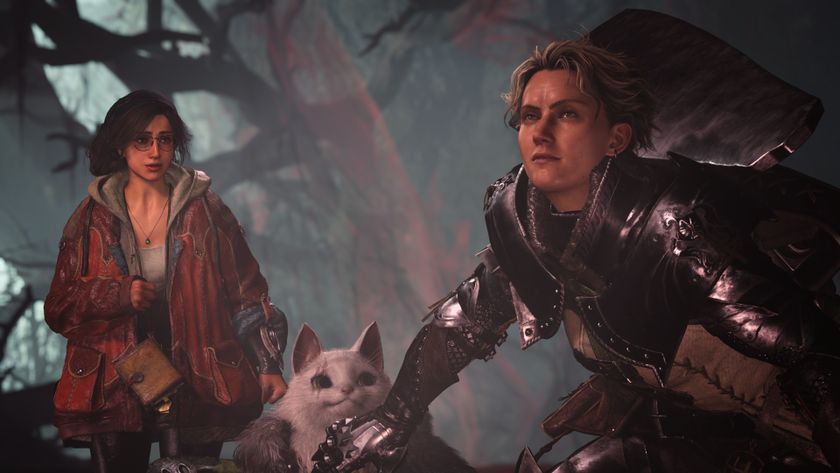

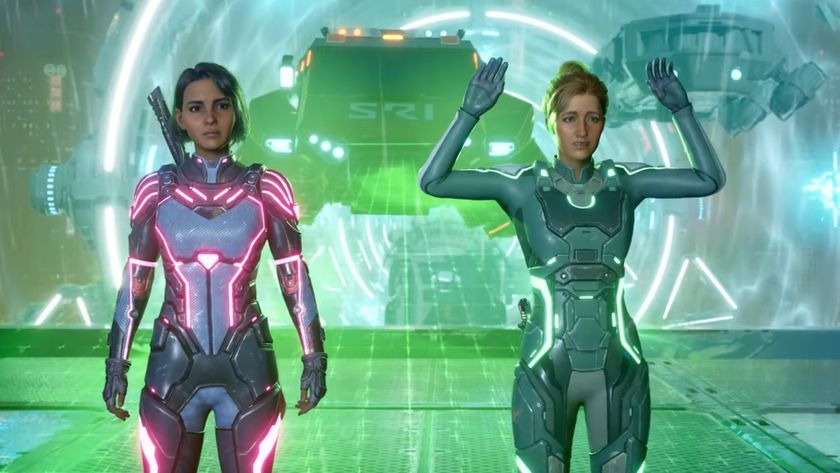
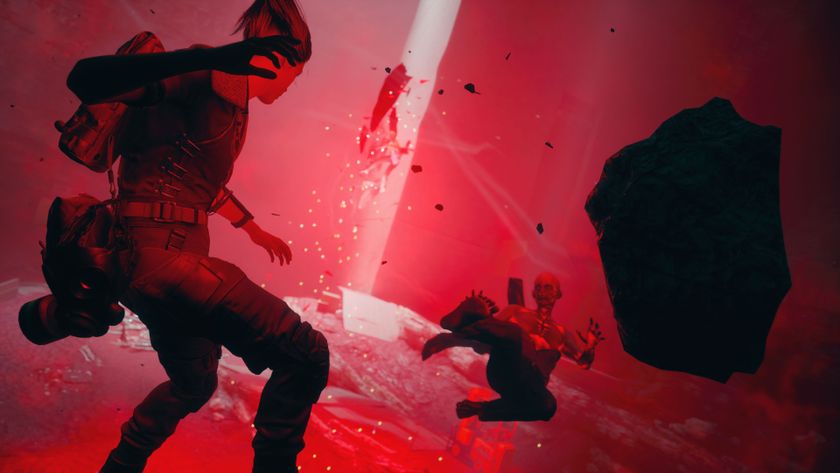
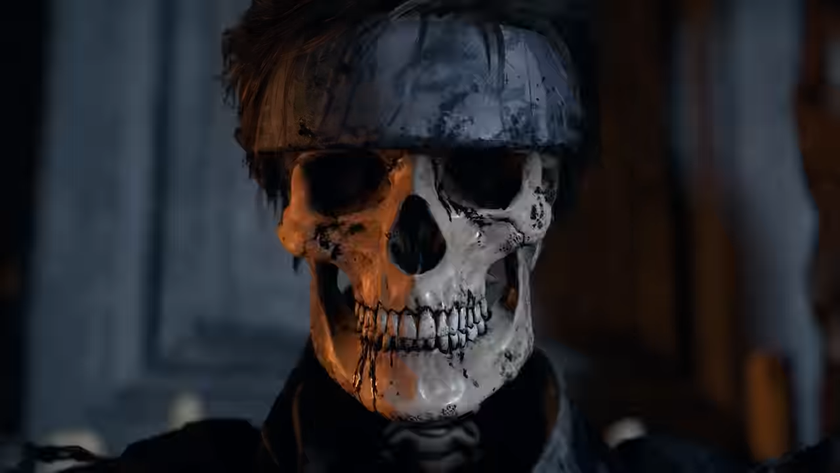
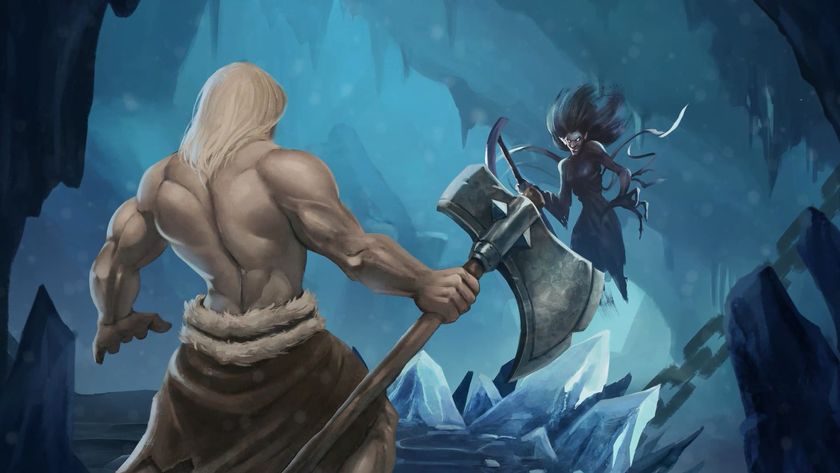

Coder faces 10 years' jailtime for creating a 'kill switch' that screwed-up his employers' systems when he was laid off
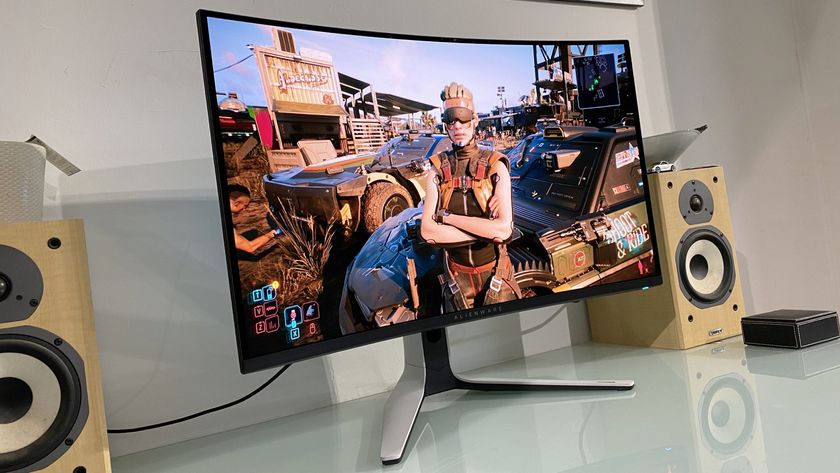
New modder tool makes it easier than ever to swap AMD's FSR 4 scaling for Nvidia's DLSS or Intel's XeSS and vice versa
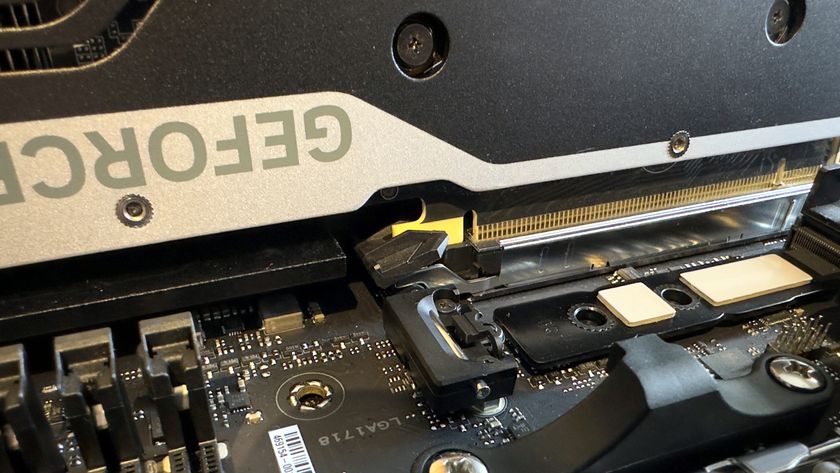
Gigabyte seemingly mocks Asus' recent Q-release debacle with a video swapping out an RTX 5070 Ti 100 times
